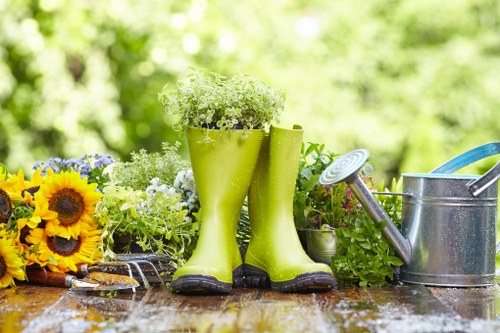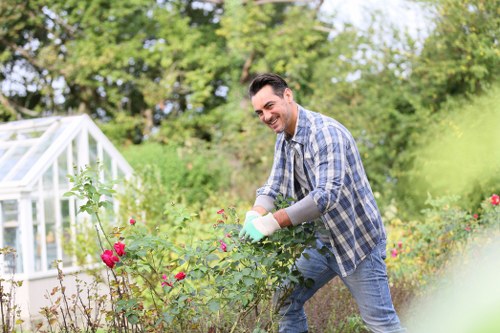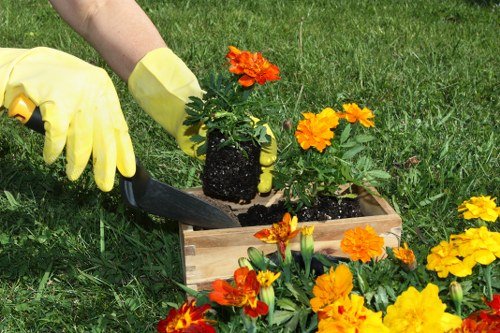Gardener Barbican: Nurturing Green Spaces in the Heart of the City

Welcome to the world of Gardener Barbican, where nature meets urban living. Located in the vibrant Barbican Estate, Gardener Barbican plays a pivotal role in maintaining the lush green spaces that offer a breath of fresh air amidst the bustling cityscape.
The Barbican is renowned for its blend of residential living, cultural venues, and expansive gardens. At the heart of this verdant oasis is the dedicated team of gardeners who ensure that the flora remains healthy, vibrant, and inviting.
Understanding the work and dedication of Gardener Barbican provides insight into how urban green spaces can thrive, offering both aesthetic beauty and ecological benefits.
Introduction to Gardener Barbican

Gardener Barbican is more than just a gardener; it is a symbol of commitment to sustainability and community well-being. The position involves meticulous planning, a deep understanding of horticulture, and a passion for creating spaces where people can connect with nature.
Located in one of London's most iconic estates, the gardeners here are tasked with maintaining a variety of plants, trees, and flowers that contribute to the estate's unique character.
Their work ensures that residents and visitors alike can enjoy serene environments, whether they are strolling through the gardens, attending events, or simply taking a moment to relax.
History of the Barbican and Its Gardens

The Barbican Estate was constructed in the late 1960s and early 1970s as part of the post-war regeneration of the City of London. Designed by Chamberlin, Powell and Bon, it is one of the largest residential developments in Europe.
The gardens were an integral part of the original design, intended to provide green spaces for residents amidst the concrete landscape. Over the decades, these gardens have evolved, embracing modern sustainable practices while preserving their historical charm.
Gardener Barbican has been at the forefront of this evolution, ensuring that the gardens not only remain beautiful but also environmentally friendly and resilient.
The Role of a Gardener at Barbican

The role of a gardener at Barbican is multifaceted, encompassing a range of responsibilities that ensure the gardens remain picturesque and healthy throughout the year.
Daily Tasks:
- Planting and pruning trees and shrubs
- Mowing lawns and maintaining flower beds
- Managing irrigation systems
Responsibilities:
- Ensuring plant health through proper care and maintenance
- Implementing sustainable gardening practices
- Collaborating with the community for garden projects
Sustainable Gardening Practices

Sustainability is at the core of Gardener Barbican's philosophy. By employing eco-friendly methods, they minimize environmental impact while promoting biodiversity.
Some of the sustainable practices include:
- Using compost and natural fertilizers to enrich the soil
- Implementing rainwater harvesting systems
- Promoting native plant species to support local wildlife
These practices not only maintain the health of the gardens but also educate the community about the importance of sustainable living.
Vegetation and Plant Varieties at Barbican

The Barbican's gardens boast a diverse array of vegetation, carefully selected to thrive in an urban environment. This diversity ensures year-round color and interest, attracting various forms of wildlife.
Some of the key plant varieties include:
- Ornamental trees like magnolias and horse chestnuts
- Seasonal flowers such as tulips, daffodils, and roses
- Herbaceous plants that provide texture and fragrance
Each plant is chosen based on its resilience, aesthetic appeal, and contribution to the overall ecosystem of the gardens.
Seasonal Changes and Maintenance

Gardener Barbican must adapt to the changing seasons, ensuring that the gardens remain vibrant and healthy all year long.
In spring, the focus is on planting and encouraging new growth. Summer requires diligent watering and pest management. Autumn involves preparing plants for colder weather, and winter maintenance includes protecting sensitive species from frost.
Regular maintenance routines are essential for mitigating seasonal challenges and maintaining the gardens' beauty and functionality.
Community Engagement and Education

Gardener Barbican places a strong emphasis on community engagement. By involving residents in gardening activities, they foster a sense of ownership and connection to the green spaces.
Educational programs and workshops are regularly held to teach sustainable gardening practices, the importance of biodiversity, and how to care for plants.
This engagement not only enhances the gardens but also builds a community that values and supports environmental stewardship.
Challenges Faced by Barbican Gardeners

Maintaining gardens in an urban setting like Barbican comes with its unique set of challenges. These include limited space, pollution, and the urban heat island effect.
To overcome these challenges, Gardener Barbican employs innovative solutions such as vertical gardening, using air-purifying plants, and selecting heat-tolerant species.
By addressing these issues creatively, they ensure that the gardens remain sustainable and resilient in the face of urban environmental pressures.
Vegetative Health and Soil Management

Ensuring the health of the plants begins with proper soil management. Gardener Barbican utilizes organic compost and natural fertilizers to enrich the soil, promoting robust plant growth.
Regular soil testing helps in identifying nutrient deficiencies and pH imbalances, allowing for timely interventions to maintain optimal growing conditions.
Healthy soil is fundamental to the overall success of the gardens, supporting the diverse plant life that defines the Barbican's green spaces.
Nearby Areas to Gardener Barbican

The Barbican Estate is surrounded by several vibrant neighborhoods, each offering unique features and contributing to the area's rich cultural tapestry. Here are some of the nearby areas:
- Bornholme: A modern residential area adjacent to Barbican with contemporary architecture and parks.
- St. James's: Known for its upscale shops and historical sites, just a short walk from Barbican.
- Barbican North: An extension of the Barbican Estate featuring additional gardens and recreational facilities.
- Moorgate: A transport hub offering easy access to various parts of the city and close to Barbican's gardens.
- Silvertown: An area undergoing significant redevelopment with new green spaces and community projects.
- Whitechapel: A culturally diverse neighborhood with markets, eateries, and art galleries near the Barbican.
- Farringdon: Renowned for its historic streets and vibrant nightlife, located just south of Barbican.
- Clerkenwell: An area famous for its design studios, restaurants, and creative industries adjacent to Barbican.
- London Wall: A historic area featuring landmarks and close proximity to the Barbican's green spaces.
- City of London: The financial heart of the city, offering a contrast with serene gardens like those maintained by Gardener Barbican.
Each nearby area complements the Barbican Estate, enhancing the overall living experience with a mix of cultural, historical, and natural attractions.
Conclusion
Gardener Barbican is instrumental in preserving the green heart of the Barbican Estate, ensuring that urban living is harmoniously blended with nature. Through sustainable practices, community engagement, and resilient gardening, they create and maintain spaces that enrich the lives of residents and visitors alike. The dedication of Gardener Barbican underscores the importance of green spaces in urban environments, fostering a healthier, more vibrant community.
Frequently Asked Questions
1. What are the main responsibilities of Gardener Barbican?
Gardener Barbican is responsible for maintaining the gardens, including planting, pruning, lawn care, managing irrigation systems, and implementing sustainable gardening practices to ensure the health and beauty of the green spaces.
2. How does Gardener Barbican contribute to sustainability?
They employ eco-friendly methods such as using compost and natural fertilizers, rainwater harvesting, promoting native species, and minimizing the use of chemical pesticides to create an environmentally sustainable garden.
3. Can the community participate in gardening activities at Barbican?
Yes, Gardener Barbican actively engages the community through workshops, educational programs, and volunteer opportunities, fostering a sense of ownership and connection to the gardens.
4. What types of plants are commonly found in Barbican's gardens?
The gardens feature a variety of ornamental trees, seasonal flowers, herbaceous plants, and native species selected for their resilience and contribution to the ecosystem.
5. What challenges do Barbican gardeners face in an urban environment?
Challenges include limited space, pollution, and the urban heat island effect. To address these, they use innovative solutions like vertical gardening, air-purifying plants, and heat-tolerant species.

